Ford Edge Vs Escape: Which Ford Crossover is Better for You?

Two-row crossovers are the default vehicle of choice for an increasing number of families. Practical, spacious, and higher off the ground than a sedan, these wagons-on-stilts offer a lot of bang for one’s hard-earned buck.
Ford currently offers a pair of these rigs, available with all-wheel drive and seating for five humans – plus a couple of furry pets in the cargo area. The Escape nameplate has been in showrooms for almost 20 years while the Edge has appeared on roads across our country since the beginning of this decade.
Get a Quote on a New Ford Escape or EdgeThe Escape is the smaller of these two machines, competing against other compact crossovers like the Toyota RAV4. Meanwhile, the mid-size Edge also offers two rows of seating but is much more commodious than its little brother. Naturally, it is also more expensive.
Which Ford crossover is right for you? Read on.
Ford Edge vs Escape
Cabin Space
Escape: Surprisingly, headroom and legroom in the dimensionally smaller Escape are roughly equal to that of the Edge, at least for front seat passengers. Those in the rear, however, will find themselves in much smaller quarters. Families with future NBA stars in their ranks will feel the pinch of leg and hip room, 3.3 inches and 5.1 inches respectively less than the Edge.
Edge: Nearly a foot longer than the Escape, the Edge is a great choice if the number of ankle-biters in one’s home amounts to no more than a pair but trips to hockey practice are frequent. Passenger volume is an impressive 113.9 cubic feet, meaning there will be plenty of stretch-em-out room for you and four friends.
Bottom Line: If you need the passenger space, either due to the number of humans or long-of-leg offspring, the Edge is a better choice.
Cargo Capacity
Escape: In the cargo area behind its second row of seats, the Escape can carry 34.0 cubic feet of detritus. Flipping and folding that rear bench reveals another 34 cubes of room. For comparison, a CCM Pro Goalie Bag consumes 14.6 cubic feet.
Edge: This crossover with five seats will accept a grand total of 39.2 cubic feet of gear behind its second row. Freed from the shackles of three-row seating, the Edge has some nifty storage solutions in its cargo area, meaning one can conceal their entire stash of enriched uranium without worry. With the seats down, the cargo capacity jumps to 73.4 cu-ft.
Bottom Line: Again, the Edge wins in terms of raw numbers. Buyers simply need to ask themselves if they need all the space provided by the bigger car.
ALSO SEE: CVT Transmission Pros and Cons
Technology
Escape: FordPass 4G internet connectivity is standard on all trims, allowing young social media darlings to jump online and IG their latest selfie. Adaptive cruise control and lane-keeping systems are available on top-spec models.
Edge: Wireless charging pads and an abundance of power outlets keep everyone’s favorite device fully charged. Ford’s gee-whiz CoPilot360 includes impressive tech such as evasive steering assist and lane centering to keep drivers on the straight and narrow. In a burst of practicality, Ford directs a washer nozzle on the rear-facing camera to clear away road grime.
Bottom Line: While the Escape has plenty of infotainment gear, the Edge has a definite advantage in terms of modern driver-assist technology. Ford’s CoPilot360 suite of systems take much of the stress and strain out of a daily commute.
Powertrains
Escape: Every Escape engine emits exhaust from four cylinders, the most powerful of which is a 2.0L turbocharged unit making 245 horsepower. This is paired with a six-speed automatic gearbox, as are the 179-hp 1.5L engine and 168-hp 2.5L naturally aspirated mill. All-wheel drive is available on all trims except the base model.
Edge: A pair of engine choices are offered in the Edge. Customers can select the standard-equipment 2.0L turbocharged inline-four, a mill which also appears in the Escape but makes 5 extra horsepower in the Edge. The hot-rod ST trim features a tasty 2.7L turbo V6 with 335 ponies in its stable. The latter is available only with all-wheel drive and an eight-speed automatic backs both engines.
Bottom Line: The cheapest Escape is definitely not as fleet-of-foot as the cheapest Edge, but performance figures start to overlap when both are equipped with the 2.0L EcoBoost. Those seeking the speediest way to Costco should sample the powerful Edge ST.
Fuel Economy
Escape: The most fuel-efficient engine in the Escape lineup is the mid-level 1.5L EcoBoost, capable of returning 26 mpg in combined city and highway driving when fitted to a front-wheel-drive rig. The EPA says it will crack the magical 30 mpg mark in highway cruising. Adding all-wheel drive shaves 2mpg off those numbers.
Edge: Though it is dimensionally larger than the Escape and needs to punch a much bigger hole in the atmosphere at highway speeds, Ford’s two-row Edge acquits itself well at the pumps. Front-wheel drive models are rated at an impressive 29 mpg in highway driving, with a 1mpg penalty for all-wheel drive on four-cylinder models. The powerful V6 is good for an estimated 21 mpg in mixed city and highway duty.
Bottom Line: Thanks to a transmission with eight gears, the Edge makes the most of its modern drivetrain and returns Escape-level highway fuel economy despite wearing a much larger set of clothes.
Driving Dynamics
Escape: Based on a front-wheel-drive platform that also underpins the Ford Kuga sold in overseas markets, the Escape provides confidence-inspiring handling characteristics that will be appreciated by new drivers. It is also a notably quiet vehicle, with Ford engineers making smart use of insulation and acoustic glass to dampen road and wind noise.
Edge: Able to carry a family of five and a yaffle of gear, the Edge still manages to pack in an appropriate level of all-wheel drive surefootedness on models so equipped. A firmer suspension is unique to the sporty ST model, imbuing the mid-size crossover with enough performance chops to provide quick turn-in and little body roll.
Bottom Line: Neither of these soft-roaders are equipped for a day on the Rubicon Trail but, to be fair, few of their owners will press them into such a task. Both the Escape and Edge have a maximum tow rating of 3,500 lbs.
Style
Escape: The third-generation Escape was introduced way back in the 2013 model year. It was given a nip and tuck a couple of years ago to bring its appearance in line with the rest of the Ford SUV design language. Perfectly unoffensive, it is also perfectly forgettable.
Edge: Wearing modern clothes, the Edge cuts a striking figure in a sea of lookalike crossovers. A pair of frowning headlights scowl at traffic, serving as bookends for an enormous maw of a grille. Around back, a quasi-spoiler juts out from the roofline while twin exhaust tips poke from the rear bumper.
Bottom Line: Always a subjective measure, your author’s jaundiced eye feels the Edge is a more pleasant shape, with better lines and a more modern look. A styling rethink for the smaller Escape can’t come soon enough.
Pricing
Escape: Base S models start at a very reasonable $24,105. For that sum, one will find the entry-level 2.5L engine driving only the front wheels and a bare-bones level of equipment. Popular and well-equipped SE and SEL trims sticker on either side, respectively, of $30,000 with all-wheel drive. A fully loaded AWD Titanium model can come uncomfortably close to $40,000.
ALSO SEE: Ford Edge vs Explorer: Which SUV is Right for You?
Edge: This crossover technically starts under $30,000 before fees and destination charges. From there, volume models like the popular SEL trim are priced in the mid-$30,000 bracket but adding all-wheel drive tacks on an extra $1,500. Options on top-rung Titanium trims add up quickly, while a fully loaded hot-rod ST can zoom past $50,000.
Bottom Line: Families seeking the extra space afforded by the Edge might be surprised to learn it is not many leagues more expensive than the Escape … if they select a base model and are judicious with optional equipment.
The Verdict: Ford Edge vs Escape
If one’s family includes two offspring, skip the Escape and head straight for the Edge. Its dimensions and smart packaging will make for a much more pleasant experience for both the kids in the back and the parents up front. The available driver-assistance systems baked into CoPilot360 will find lots of fans, as will its sharp styling, particularly on the ST model.

Living in rural Canada, Matthew has immersed himself in car culture for over 30 years and relishes the thought of a good road trip. A certified gearhead, he enjoys sharing his excitement about cars and is very pleased to contribute at AutoGuide. Matthew is a member of Automotive Journalists Association of Canada (AJAC).
More by Matthew Guy











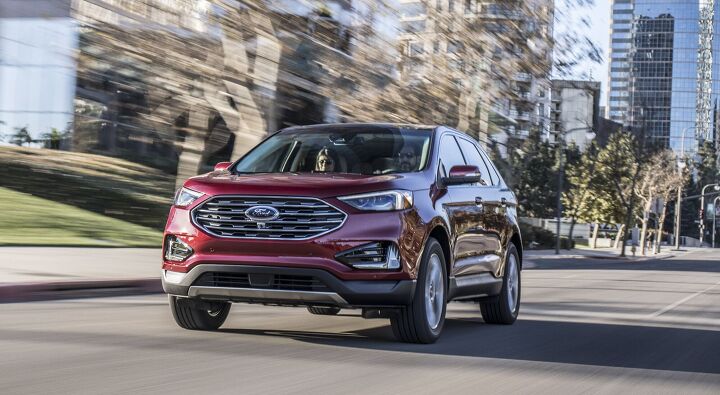
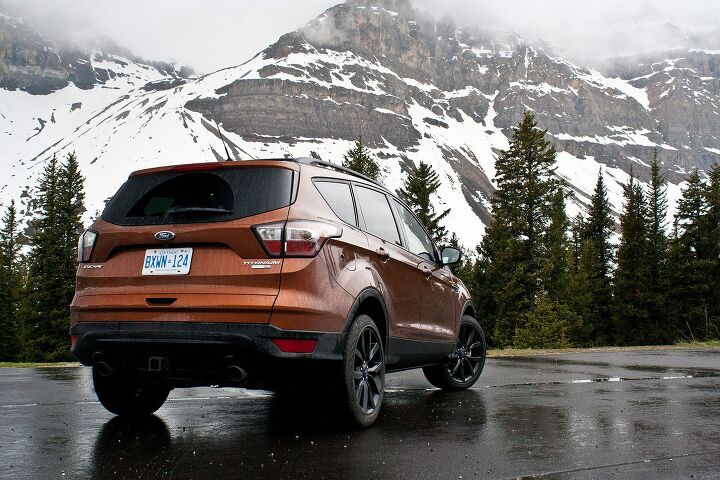
















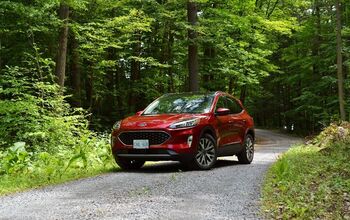
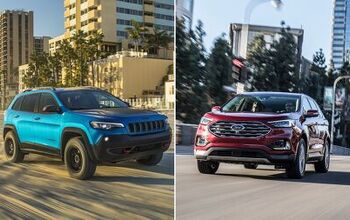

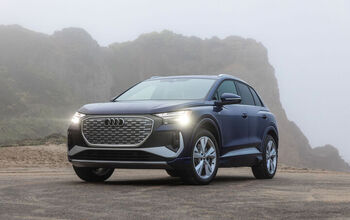


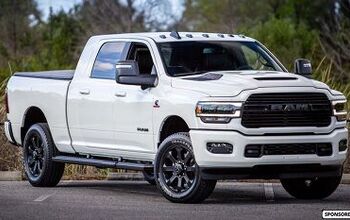

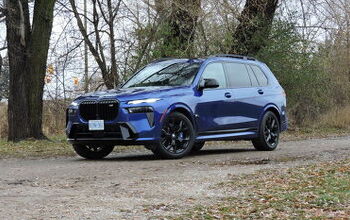




Comments
Join the conversation
Ok...i go through reading all this...when I get to the end... I fill in all the info only to find it doesn't accept Canadian phone numbers or postal codes... it ticks me off....why not put "NOT FOR CANADIANS" at the start...I wasted all that time when I could have checked out other sights...I only have a short amount of time